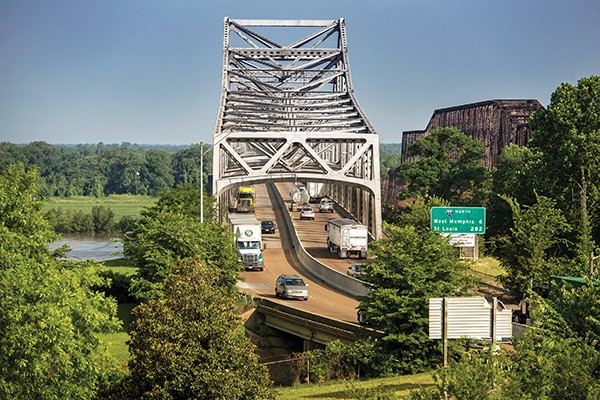Turns out, we can drive I-55, at least for another year.
Last week the Tennessee Department of Transportation (TDOT) hit pause on a plan to build a new interchange for Interstate-55 at E. H. Crump and Riverside. That $60 million plan would have closed the Memphis-Arkansas Bridge for nine months, beginning in 2017.
Opposition to the bridge closure mounted quickly after news of the plan broke in the Flyer in late May. By the beginning of July, TDOT Commissioner John Schroer remained resolute in his decision to implement the plan. When asked if anything would change his mind, Schroer told the Flyer that, “It’s not a case of changing my mind. It’s about making the right decisions, and, in this case, we made the right decisions.”
 Brandon Dill
Brandon Dill
Less than a month later, TDOT announced it would idle the project for one year as it studied the project’s impact on the regional economy and the communities surrounding the proposed construction.
TDOT will take the year to compare two plans. One is the plan on the table, with a three-year construction period and a nine-month closure of the bridge. The other has a six-year construction period and would close only some traffic lanes across the bridge, but there would be no full closure.
“Over the past several weeks, we have heard from residents, business owners, elected officials, and other stakeholders in Memphis and in Arkansas, and we understand there is a significant level of concern over a full closure of the Memphis-Arkansas Bridge,” Schroer said in a news release Friday. “We want to take the opportunity to address those concerns before moving forward with construction.”
The loudest, most formal opposition to the plan came from Arkansas state Senator Keith Ingram of West Memphis. Ingram launched a petition at change.org to fight the bridge closure, saying it would “devastate” local economies and “cripple” emergency services.
Ingram said he and a group of state and local officials had a “good and meaningful” meeting with Schroer two weeks ago. He said delaying the project is a “good first step” in the process to build a new interchange.
“I think sometimes, and I’m not saying it’s the case here, but sometimes in Little Rock, or Nashville, or Jackson, Mississippi, it’s easy to make some of these decisions until you really see first-hand and understand the daily disruption and the regional impact that closing this bridge would have for all of us,” Ingram said.
The Greater Memphis Chamber also opposed closing the bridge, fearing the move could have a multi-billion-dollar negative effect on the regional economy.
“We appreciate TDOT’s leadership on this issue and support their plan to delay the project for a year to complete additional analysis of the impact and to work with Arkansas and regional businesses on any alternatives to a complete closure of the bridge during construction,” said Dexter Muller, the Chamber’s senior advisor.
The plan delay was good news for West Memphian Jim Russell. He’s retired and travels to Memphis for medical visits and to volunteer at the Memphis Botanic Garden.
“I was planning on not going to Memphis at all anymore, except for some doctors’ appointments I couldn’t change,” Russell said. “I was going to cut out the Botanic Gardens completely, but now I won’t have to do that.”

 Courtesy TDOT
Courtesy TDOT 